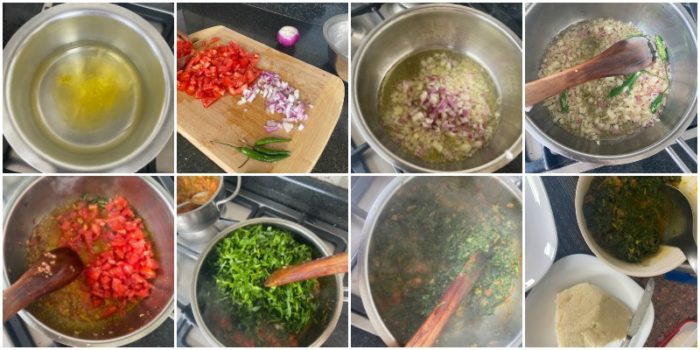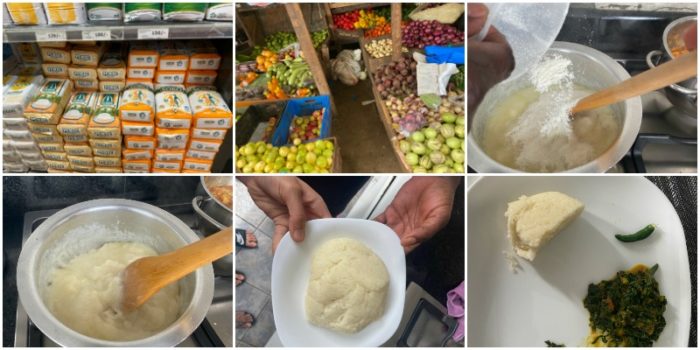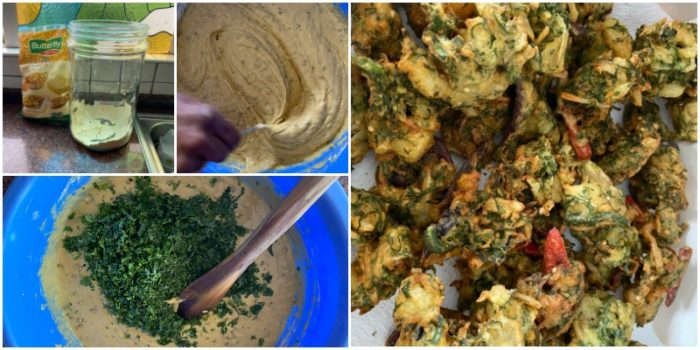Kenyan cooking in Leeds

Cooking at university used to be the bane of my existence- probably because I wasn’t very good at it. It was only in second year after living of pasta and frozen pizzas for the entirety of first year that I thought to become more creative with the type of food I was cooking. To do this all I needed to do was call my mum. My mum like most mums is an AMAZING cook. But seriously my mum’s food is “magical” (I hope you’re whispering that as you read it).
I’ve been home for almost two weeks and I can safely say that I have never eaten so well, I’m particularly appreciative of all the delicious home cooked meals I’ve been getting as I was away at university for ten months and having your mum cook for you is probably one of the best feelings in the world.
Now I don’t want to toot my own horn (or maybe I do), but I have to say that as someone who has always had quite a large appetite, I believe that throughout second year I made sure that I was eating wholesome, healthy and delicious meals (ignoring the few days when I survived of chicken nuggets that I’m now pretty sure I hadn’t baked for long enough). If you don’t know by now (you really should – I’m kidding lol), I’m Atiyah and I’m from Kenya. Something I’ve grown up eating is a traditional Kenyan dish – Ugali and Sukuma Wiki. Ugali is made using maize flour and is really good for you as it is filling and an excellent source of carbohydrates, meaning it pumps your body with lots of energy (which as a university student you will definitely need. Now this is paired with Sukuma Wiki (which is made largely of spinach). Now I always thought that I could be one of those cool healthy uni students who starts of her day with a green smoothie and then goes for a long run, but if you haven’t figured it out by now- I’m not. I used to convince myself that if I bought spinach, I would have to get through it in the week. And I did, not by drinking bright green smoothies but my making this. I get my ingredients for the Sukuma Wiki from the Kirkgate market, which is perfect because the prices are student friendly and every time I get there I end up buying some fresh fruit too (which I’m definitely not complaining about). The rest of the ingredients will be easily available at your trusty supermarket of choice (mine being Morrisons). Funnily enough, I didn’t know that you could get maize flour at morrisons (I don’t know why) and brought my own Ugali from home. I can assure you that I have never done this again.

So, to start off with these are the ingredients you need:
For the Ugali:
1. Maize Flour
2. Water
3. Oil
4. Salt
For the Sukuma Wiki:
1. A bunch of Spinach or Kale (roughly speaking)
2. 1 onion
3. 2 tomatoes
4. Some garlic paste (optional)
5. Salt
6. chilies (optional)
7. a little oil
So, I like to start by cooking the spinach and to do this, you need to start by heating some oil up, a tablespoon or two of vegetable oil should be okay. Once it’s all nice and hot, put in your chopped onions (chewing gum while cutting your onions will help with the tears), then add your tomatoes and chilies if you wish. At this point, I also add in a little bit of garlic paste, but like I said you don’t have to, and it tastes good either way. Then stir it around (obviously) and add in your roughly chopped spinach or kale and watch the magic begin. Season with salt to taste. It should have reduced considerably before its ready to eat. And it’s literally that simple.

Because I’m a chef and I’m cool like that while my Sukuma wiki is cooking, I take around a cup of water and bring it to a boil, adding in salt and a little oil (you can also use butter if you like- this is to keep the ugali is perfectly soft). This way when my spinach is done cooking, I don’t have to wait and can get started on the ugali. Now once the water is boiling you want to add in your maize flour a tablespoon at a time and stir quickly and efficiently. This will ensure that your ugali is nice and smooth. You want your ugali to look like the photo below. I would suggest adding a little flour at a time and stirring until you heart tells you to stop and it looks like what mine looks like (I’m no professional but I have to say mine is really good!). It may not look the most appetizing but trust me when I say it tastes delicious.

Now you can enjoy this as you watch a lecture or some Netflix (I’m not here to judge you- but seriously a lecture?)
Now this next “delicacy”, if you will is something I like to make when I have a little more time on my hands and when I’m feeling dangerous (there’s something about the piping hot oil that just brings my adrenaline levels up- I’m only joking and I’m certainly not crazy)
These are the ingredients you will need to make the gram flour pakoras:
1. Gram flour
2. Salt
3. Ginger/garlic paste
4. Green chilies whole and paste
5. Water
6. Make a batter
7. Vegetables of your choice that you don’t want to go bad
8. Fry in oil
9. Enjoy with tamarind sauce
Once again most of the ingredients which are vegetables of your choice (therefore making this dish somewhat healthy despite the fact that its fried in oil) are easily available at the market. I tend to use any vegetables that are left over from the week. This could be peppers, potatoes (boil these first), onions (definitely use these), chopped coriander spinach, eggplant (literally anything) and chilies! (literally anything).
To begin with take a large pot and fill half of it with vegetable oil. Let it heat up, it needs to be EXTREMELY HOT. As your oil is heating up take a mixing bowl, add in your gram flour, some water and mix until it’s a thick paste, add in a little of your garlic and ginger paste, then add in your chopped vegetables and some salt, if you have any baking soda you can also add a pinch of this to help make your pakoras extra fluffy).

Now here is the fun part, use a tablespoon to take the batter and drop it into the hot oil. Lower the heat once you begin to fry your pakoras. They should be golden brown. Take them out and use a kitchen towel to soak up the excess oil, then enjoy them on their own, or with some tamarind chutney and Karak chai (the option I tend to lean towards.
I hope you have fun making these and use it as an opportunity to explore the Leeds Kirkgate market and pick up some fresh produce.
